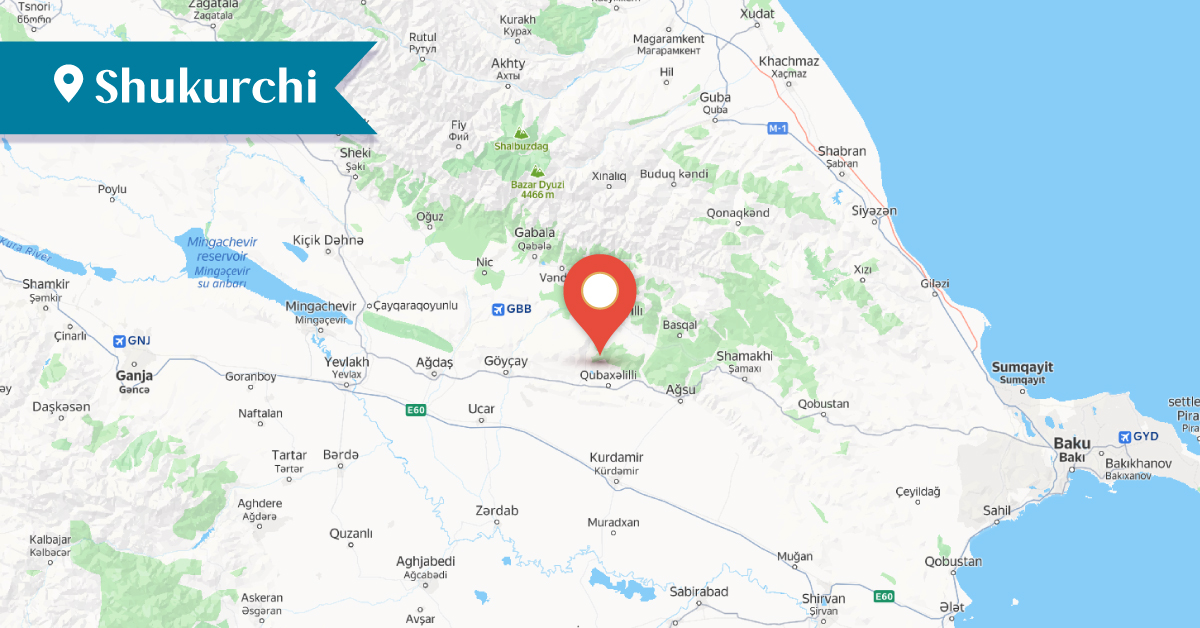2025
2025
2025-09-01

The village of Shukurchi[1] in the Ismayilli district of Eastern Transcaucasia is located 14.5 km southwest of the district center, Ismayilli.
The village has also been known by the names Shükürchi, Shukurji, and Shukurchu. It was founded in the late 18th or early 19th century by Armenian inhabitants resettled from the villages of Baluja[2], Dashbulagh[3], Khanդzk, and Ghshlag in the Khachen province of Artsakh.
In 1861 the village had 17 Armenian households, and according to the data of 1865 — 15 households. In 1886, Shukurchi was home to 24 Armenian households with 224 inhabitants; in 1890 — 25 households with 155 inhabitants. By 1912 the Armenian population of the village had reached 335 people in 54 households.
There was no school in the village. In 1913 the residents of Shukurchi appealed to the Baku Philanthropic Society for assistance in building a school. In 1915 a coeducational school was opened in the village. Located in a private house, during the 1915–1916 academic year the school had one teacher (Azat Movsisyan) and 22 pupils.
In the western part of the village there stood a basilica-type church. It was built in 1862 through the efforts of the brothers Hovhannes and Petros Javadyan-Khalafyants. In 1865, Archbishop Daniel Shahnazaryants, the Armenian prelate of Shamakhi, consecrated the Church of St. John the Baptist. In 1888, Hovhannes Javadyan-Khalafyants funded the renovation of the church. When the monument researcher Samvel Karapetyan visited the village in 1985, the quadrilateral stele with a 19-line Armenian inscription still stood on the grave of Petros Javadyan-Khalafyants, located on the southern side of the church. Below is one excerpt:
You were born and became a servant to the world.]
You found peace in good deeds and in love...
...This is the grave of the late Petros Javadian-Khalafyants,
born in 1846 and deceased on January 20, 1888.
The Armenian cemetery of Shukurchi was located about 300 meters south of the village. In 1985, several dozen hewn rectangular tombstones dating to the 19th–20th centuries were still preserved there.
The events of the summer of 1918 were fatal for Shukurchi and other Armenian villages of the region. Ottoman troops, who had invaded the territory of Eastern Transcaucasia, together with local Turkic-Tatar marauding bands, massacred the Christians—first and foremost the Armenians—and destroyed their settlements. The village of Shukurchi also came under attack. Many of its inhabitants were killed or taken captive. By the end of June 1918, the village was in ruins. Only part of the population managed to escape, joining the Armenian detachment retreating toward Shamakhi.
After the establishment of Soviet rule in Azerbaijan, some of the surviving natives of Shukurchi returned to their village. However, in the 1950s the inhabitants of Shukurchi abandoned the village. At present, the village is inhabited by Lezgins.
Bibliography
Daniel Archbishop, “Visit to the Churches of the Villages of the Armenian District of Shamakhi.” Ararat 10 (1871), p. 321.
Mesrop Archbishop Smbatyants, Description of the Monastery of Saint Stepanos of Salian and Other Monasteries and Sacred Sites in the Towns and Villages of the Shamakhi Diocese. Tiflis, 1896, p. 139.
Karapetyan S., The Armenian Lapidary Inscriptions of Aghvank Proper, Yerevan, 1997, pp. 26-27.
Bishop Makar Barkhutaryants, The Land of Aghvank and Its Neighbors. Artsakh. Yerevan, 1999, pp. 105-106.
Karapetyan S., Aghvank Proper, Part 1, Yerevan, 2024, pp. 170-173.
[1] The present Azerbaijani name of the village is Şükürçü
[2] Baluja, now Aygestan.
[3] Dashbulagh, now Artsakhashen.